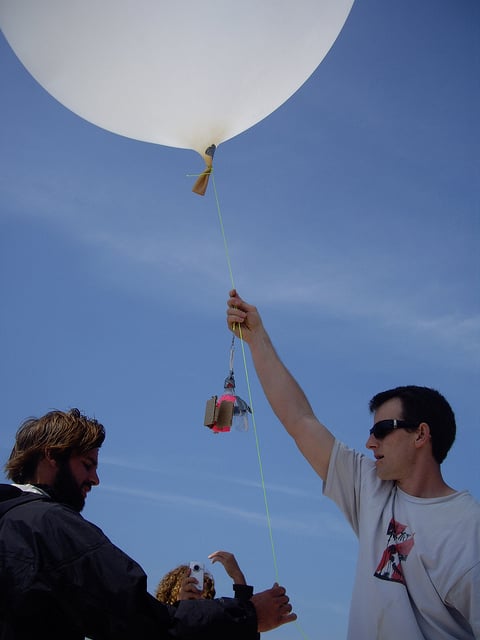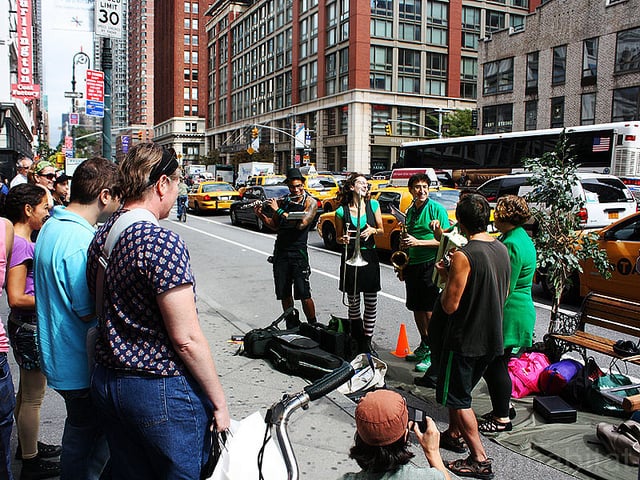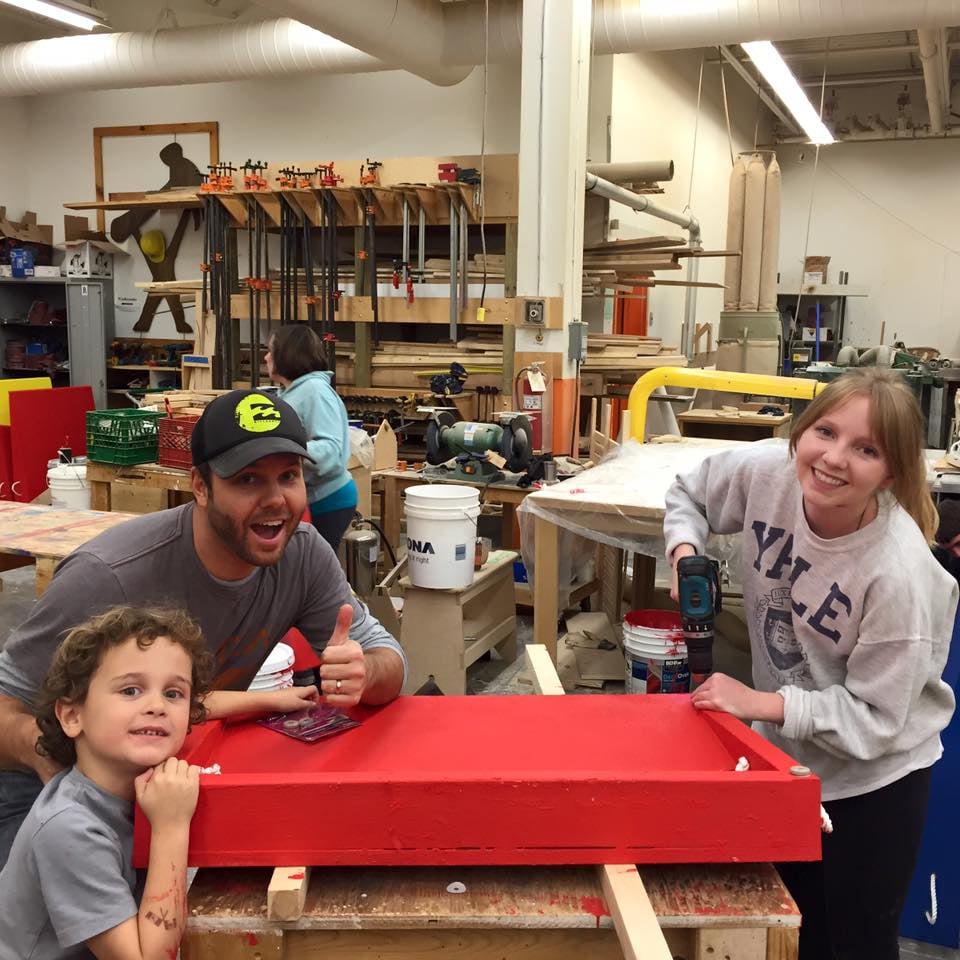
ne of New York City’s largest volunteer projects has been working for over a decade to make the city brighter one daffodil bulb at a time. Since 2001 New Yorkers for Parks (NY4P) has been planting daffodils every fall and watching them grow in the spring. As of 2017 the project has distributed more than a half a million bulbs citywide and partnered with the NYC Housing Authority and city schools to engage more than 100,000 students and volunteers.
The global initiative of Jane's Walk is inspired by activist and urban studies scholar, Jane Jacobs. In her practice Jacobs emphasized that cities should be shaped by the residents that occupy them and Jane’s Walks provide opportunities for people to tell the stories of the spaces where they live, work and play while also building new relationships within their communities.
Trained as an Urban Planner, designer and visual artist Candy Chang has been making art in the public sphere since 2006. In 2009 she collaborated with the Center for Urban Pedagogy and the Street Vendor Project to make a poster pamphlet that explained the complex regulatory system for street vendors in New York City. The project includes a history of street vending in New York, interviews with street vendors and policy reform recommendations.
Food is, and always has been, something that brings people together. It’s an opportunity to share ideas, to meet new people, to learn new things, and to have some fun. There are so many different initiatives that have food as integral part of community building, here are just a few examples of people and projects that inspire us to think creatively about the importance of a meal.
Since 2013 [bc] has facilitated the design and construction of 22 unique Little Free Libraries/Libros Libres. Inspired by Little Free Libraries, the Dallas based Libros Libres program has brought together local artists, designers, and community leaders to design and build a range of public outdoor book exchanges.
Using kites and balloons to take aerial photos and create maps of your neighborhood is a great way to start documenting and understanding a place.
There are countless options for what to do on PARK(ing) DAY. Playtime, workshops, communal meals, naps - these are just a few examples of what people have come up with. A parking space seems small but its transformation through programming and design can have a huge impact on the life of a public street.
The one step ramps built by volunteers for the Stop Gap Foundation are a temporary, attention grabbing, portable solution to the challenges created by the ubiquitous one step found at the entryway to shops and businesses.
Part of Camp Crescent, a two day festival exploring and celebrating the history of Grays Ferry Crescent, 400 Years of History with Cardboard is an project by Public Workshop of cardboard models that represent often forgotten local histories of events, buildings, people, and infrastructure.










The Ghana Think Tank's most recent project, American Riad, is a 3 year project that will transform formerly abandoned homes in Detroit’s North End into 8 homes with a shared courtyard. The project concept came from a Moroccan Think Tank working to develop solutions to what they described as the United States’s “problem of social isolation”. Ghana Think Tank co-founder, John Ewing, recalled the feedback from the Moroccan group “They said to us you need to stop this obsession with the single family homes...instead you need housing more like ours: That's communal housing around a common courtyard with a single entrance, then you will have community.“